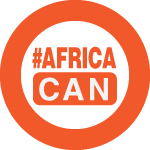Tanzania has a strong foundation for development, marked by political stability and a unified national identity. Following a period of socialist policies, the country transitioned to a market-based, multi-party system in the mid-1990s, leading to three decades of sustained economic growth and its achievement of Lower Middle-Income Country (LMIC) status in 2020.
Despite this progress, Tanzania has yet to fully realize its growth potential. With a population of 62 million, a strategic location, abundant natural resources, and a stable political environment, there are significant opportunities for sustainable and inclusive growth. However, since the mid-2010s, the pace of economic transformation and poverty reduction has slowed.
Tanzania’s ability to unlock its potential has been constrained by various difficulties in effectively calibrating policies to respond to growing economic complexity and uncertainty over the role of the private sector. The government launched Vision 2050, building on its previous Vision 2025. This new vision aims to guide Tanzania to upper-middle-income status by 2050 through sustained economic growth, equitable social development, improved human capital, good governance, and environmental sustainability.
Central to Vision 2050 is the goal of creating productive and inclusive employment. This includes prioritizing human capital development in STEM, vocational training, and digital skills. The strategy also targets key sectors like agriculture, manufacturing, tourism, and green industries as engines for job creation, while supporting entrepreneurship and empowering women, youth, and people with disabilities to ensure economic growth translates into meaningful work.
ECONOMY
Tanzania is a lower-middle income country with a per capita GDP of around $1,200. The economy is relatively diversified: agriculture accounts for about a quarter of total value addition, industry for a third, and services for the remainder. Agriculture remains the largest source of employment, with two in three Tanzanians working in the sector. 38% of Tanzanians now live in cities thanks to rapid urbanization in recent decades. Poverty is estimated at 49% using the International Poverty Line of $3 (2021 PPP) per person day, with a Human Capital Index of 0.39, roughly in line with the regional average.
Over the past years, Tanzania has built a track record of macroeconomic stability, even amid serious economic shocks. Economic development has been robust, fiscal balances manageable, and inflation has remained in the single digits. Vast natural endowments and favorable demographics have supported high investment levels that have contributed strongly to growth. The country has also seen improvements in the business environment which have led to growing investments, including Foreign Direct Investment (FDI) in productive capacity.
Tanzania runs sustainable current account deficit, estimated at 2.6% of GDP in 2024, financed by increased levels of FDI and highly concessional finance that Tanzania attracts. Higher global demand for Tanzanian goods like gold, tourism, and agricultural commodities improved the terms of trade.
The fiscal deficit has been trending toward the regional benchmark of 3% of GDP recently, despite an ambitious infrastructure agenda. Tax revenues at 13.1% of GDP in 2024 remain low compared to peers and needs. Public debt levels remain contained at around half of GDP. Prudent fiscal policy combined with stringent monetary policy has kept inflation well below the central bank’s 5% target.
Last Updated: Sep 26, 2025







